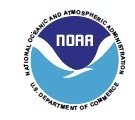The content of this factsheet was shared with permission and can be found in its original format on Disaster Aid: Resources for Other States, Sea Grant Louisiana.
What is a major storm disaster declaration?
A major storm disaster declaration refers to a formal process that requests federal assistance to deal with a major disaster that overwhelms state and local capacity under the Stafford Act. The formal request allows the federal government to provide support such as mobilizing the Federal Emergency Management Agency (FEMA) and the National Guard as well as other support, depending upon the situation.
What types of events qualify for a major disaster declaration?
Major disasters can include events common to coastal states such as tropical storms, hurricanes, flooding, and tornadoes. They can also include other natural disasters like earthquakes, wildfires, and ice storms.
Who can request a storm disaster declaration?
For storms and other natural disasters, the Governor of the state requests the disaster declaration. Only the Governor can make the request. Depending on conditions and forecasts, the Governor may request the declaration before the disaster actually occurs so that FEMA can assist with preparation and be in place to assist when the event happens, speeding up response times. In the request, the Governor sets out what type of federal aid they are requesting from the federal government for the specific disaster.
Who decides if a storm disaster declaration will be issued?
After the Governor requests a disaster declaration, the President of the United States makes all formal disaster declarations for natural disasters, like hurricanes and major storms, and determines what aid will be provided for each event.
What happens when a storm disaster declaration is declared?
When a disaster is declared, the declaration sets out what federal resources will be available, the start date of the disaster declaration, and the geographical area of the disaster (usually set out based on county lines). Once the disaster declaration is in place, federal resources can start flowing to the impacted area. This may include things like sending FEMA to the impacted area as well as providing financial resources to state and local governments.
What types of relief may be available?
Relief available will vary for each disaster declaration. For major storms like hurricanes, impacted areas often qualify for individual assistance (for persons living there) as well as other types of assistance to help state and local governments. State and local assistance can include things such as operating shelters, rescue efforts, providing emergency medical care. Sometimes governments partner with other organizations like charities and faith-based organizations to provide services. In addition, other relief types aimed at long-term recovery like rebuilding and clean up may be provided through programs like hazard mitigation grants.
Who is eligible for that relief?
The disaster declaration will specify which counties are eligible for relief. Persons living in those parishes will be able to apply for individual assistance programs. Other programs may be available for state and local governments. Be sure to look at the latest map as disaster declarations may change or be modified following a disaster to reflect damage assessments on the ground.
Can disaster declarations be modified after an event?
Yes, disaster declarations may be put in place before an event happens so that resources can begin flowing into an area. In such cases, the declarations are often modified after the actual storm or hurricane makes landfall and damage assessments can be done. In addition, disaster declarations may be modified in the months following a storm to reflect deadlines or extensions to apply for aid and relief available. You should always make sure you are relying on the most current disaster declaration.
To apply by phone call:
1-800-621-3362 (FEMA Helpline)
1-800-462-7585 (Speech or hearing impaired)
To apply online:
Resources
Find your disaster declaration at FEMA’s disaster declaration website.
Acknowledgment
This research was conducted by Louisiana Sea Grant Law & Policy Program with support from the Coastal Response Research Center and the NOAA Disaster Response Center.
All information current as of November 2023
Publication date: Nov. 1, 2023
N.C. Cooperative Extension prohibits discrimination and harassment regardless of age, color, disability, family and marital status, gender identity, national origin, political beliefs, race, religion, sex (including pregnancy), sexual orientation and veteran status.



